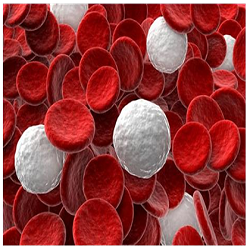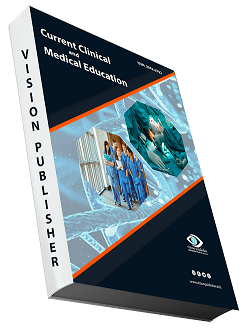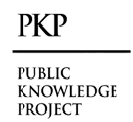The Effects of Using Nano Gold on Blood Cells
Keywords:
Nano Gold, Blood CellsAbstract
Many researchers have used gold nanoparticles to treat blood cells because of their positive effects on cells for their ability to reach the target cells inside the body, without being destroyed by the immune system as an intruder. Where Gold nanoparticles (AuNPs) are important components of biomedical applications. Where AuNPs have been used extensively in diagnostics, and are increasingly used in therapeutics. Where the researchers revealed that the gold particles coated with the polymer were the best in terms of the body's immune response, while the gold cells formed in the form of rods were the worst because they reduced the immune response, and the researchers attributed to its heavyweight, and it enters into the body's cells.
Downloads
References
B. A. Hasan, et al., "Nano Technology Enhanced Performance of a- (GeS2) 100-xGax/Ge, n, p-Si Hereterojunction," relation (J. Millman, 1979), vol. 2, p. 2, 2015.
A. P. Nikalje, "Nanotechnology and its applications in medicine," Med chem, vol. 5, pp. 185-189, 2015.
W. Zeng, et al., "Nanomaterials for sensing applications," Journal of nanotechnology, vol. 2016, pp. 1-2, 2016.
M. Palomino-Schätzlein, et al., "Assessment of gold nanoparticles on human peripheral blood cells by metabolic profiling with 1H-NMR spectroscopy, a novel translational approach on a patient-specific basis," PloS one, vol. 12, p. e0182985, 2017.
S. Siddique and J. C. Chow, "Gold nanoparticles for drug delivery and cancer therapy," Applied Sciences, vol. 10, p. 3824, 2020.
M. Gugnoni and A. Ciarrocchi, "Long noncoding RNA and epithelial mesenchymal transition in cancer," International Journal of Molecular Sciences, vol. 20, p. 1924, 2019.
N. Li, et al., "Anisotropic gold nanoparticles: synthesis, properties, applications, and toxicity," Angewandte Chemie International Edition, vol. 53, pp. 1756-1789, 2014.
M. Hecold, et al., "The effect of PEI and PVP-stabilized gold nanoparticles on equine platelets activation: Potential application in equine regenerative medicine," Journal of Nanomaterials, vol. 2017, 2017.
G. G. De La Cruz, et al., "Interaction of nanoparticles with blood components and associated pathophysiological effects," Unraveling the Safety Profile of Nanoscale Particles and Materials-From Biomedical to Environmental Applications, 2018.
D. Pan, et al., "The effect of polymeric nanoparticles on biocompatibility of carrier red blood cells," PloS one, vol. 11, p. e0152074, 2016.
H. Sun, et al., "Gold nanoparticle-induced cell death and potential applications in nanomedicine," International Journal of Molecular Sciences, vol. 19, p. 754, 2018.
S. Chatterjee, et al., "Effect of iron oxide and gold nanoparticles on bacterial growth leading towards biological application," Journal of Nanobiotechnology, vol. 9, pp. 1-7, 2011.
J. R. Herance, et al., "A translational approach to assess the metabolomic impact of stabilized gold nanoparticles by NMR spectroscopy," Analyst, vol. 144, pp. 1265-1274, 2019.
C. Imtiaz-Ul-Haque, "Determining The Political Status Ofgilgit- Baltistan–Future Perspective," National University Of Modern Languages, 2012.
V. Poonthiyil, et al., "Recent applications of click chemistry for the functionalization of gold nanoparticles and their conversion to glyco- gold nanoparticles," Beilstein journal of organic chemistry, vol. 14, pp. 11-24, 2018.
C. Su, et al., "Antibacterial Properties of Functionalized Gold Nanoparticles and Their Application in Oral Biology," Journal of Nanomaterials, vol. 2020, 2020.
A. Azam, et al., "One step synthesis and characterization of gold nanoparticles and their antibacterial activities against E. coli (ATCC 25922 strain)," Int J Theor Appl Sci, vol. 1, pp. 1-4, 2009.
S. Aldrich, "Gold nanoparticles: properties and applications," Sigma- Aldrich, St. Louis, MO, 2015.
A. Khan, et al., "Gold nanoparticles: synthesis and applications in drug delivery," Tropical journal of pharmaceutical research, vol. 13, pp. 1169-1177, 2014.
N. Agarwal and J. T. Prchal, "Anemia of chronic disease (anemia of inflammation)," Acta haematologica, vol. 122, pp. 103-108, 2009.
K. Purcell and J. Fergie, "Lack of usefulness of an abnormal white blood cell count for predicting a concurrent serious bacterial infection in infants and young children hospitalized with respiratory syncytial virus lower respiratory tract infection," The Pediatric infectious disease journal, vol. 26, pp. 311-315, 2007.
S. Avagyan and L. I. Zon, "Fish to learn: insights into blood development and blood disorders from zebrafish hematopoiesis," Human gene therapy, vol. 27, pp. 287-294, 2016.
Z. Wu, et al., "Prevalence of HIV infection among former commercial plasma donors in rural eastern China," Health Policy and Planning, vol. 16, pp. 41-46, 2001.

Downloads
Published
How to Cite
Issue
Section
License

This work is licensed under a Creative Commons Attribution 4.0 International License.
Current Clinical and Medical Education













